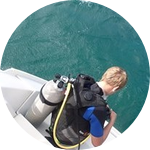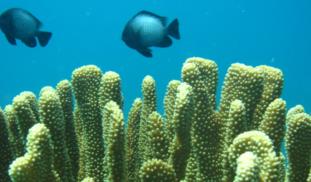Please wait...
About This Project
Reef-building corals are bleaching and dying at unprecedented rates due to ocean warming. However, corals bleach at very different rates- why? Corals are association of animals and symbiont algae that feed them. Some corals have skeletons that scatter light back to their algae much faster increasing light availability but that increases their risk of bleaching. We want to identify the skeletal morphological characteristics that may increase the risk of bleaching to better protect coral reefs.

Browse Other Projects on Experiment
Related Projects
Using eDNA to examine protected California species in streams at Hastings Reserve
Hastings Reserve is home to three streams that provide critical habitat for sensitive native species. Through...
City smart: Are cities making birds smarter?
One cannot go to Florida and miss the White Ibises roaming golf, park and private lawns. But how does a...
How do polar bears stay healthy on the world's worst diet?
Polar bears survive almost entirely on seal fat. Yet unlike humans who eat high-fat diets, polar bears never...


